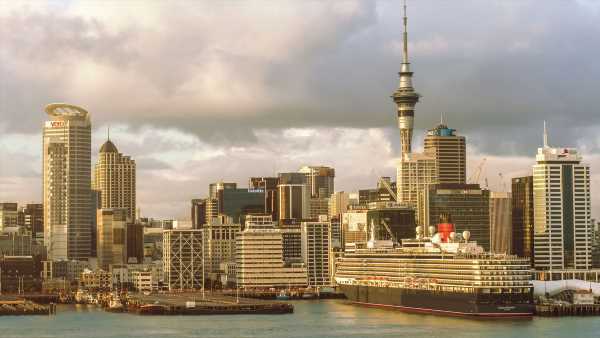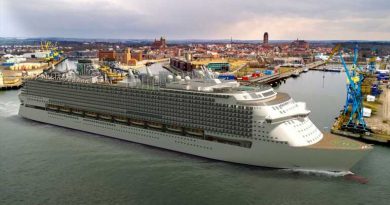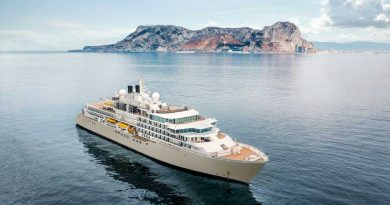New Zealand’s hull law halts voyages and cruisers learn new term: Biofoul
Biosecurity. Biofouling. Dirty hulls.
These are words used by officials and the media regarding the New Zealand government’s decision to interrupt at least eight cruise ships trying to sail the country’s waters this season.
Several of those vessels were forced to change itineraries as the country ratcheted up enforcement of a hull-cleaning requirement designed to prevent ships from potentially introducing organisms from other parts of the world that could disrupt New Zealand’s delicate marine environments.
Biofouling, or biological fouling, is the accumulation of micro-organisms, plants, algae and animals on submerged structures, such as hulls, according to the International Maritime Organization. By hitching a ride on a ship, the organisms can become invasive species in new environments by reproducing and outcompeting native species.
New Zealand implemented its hull-cleaning rules in 2018, but for its first two years, authorities focused on education and helping ship operators meet requirements. Then the pandemic hit. New Zealand was one of the last destinations to welcome back tourism, only reopening to cruise ships in July 2022. It is now in its first high season.
Paul Hallett, environmental health manager for Biosecurity New Zealand, the agency enforcing the regulation, said that while compliance is still high among vessels overall, lengthy ship layups during the pandemic, many new personnel at cruise companies and a shortage of commercial divers to perform the cleanings have led to unacceptable biofouling on some cruise ship hulls.
“We know that nearly 90% of marine pests arrive in New Zealand on the submerged surfaces of international vessels,” said Hallett. Offending species may include mussels, oysters, foliose algae, hydroids, tunicates, sponges, crabs and starfish that stow away on a ship’s underbelly.
While the infractions have made headlines, the vast majority of cruises in New Zealand have stayed on schedule, according to CLIA Australasia.
CLIA and the New Zealand Cruise Association said cruise lines are committed to protecting the country’s unique marine environment and are engaging with Biosecurity New Zealand about biofouling.
“We all want to make sure that these high standards are maintained now and in [the] future. The fouling discovered by during inspections is minor, but the requirements for cruise ships are very strict,” said Kevin O’Sullivan, chief executive director of the New Zealand Cruise Association.
The industry also knows such requirements are only going to grow. Australia is phasing in its own hull-cleaning requirement through December.
Eight ships run into biofoul issues
The eight ships that faced compliance issues meeting New Zealand’s biofouling regulations were the Queen Elizabeth, Azamara Quest, Coral Princess, Viking Orion, Regent’s Seven Seas Explorer, Silversea’s Silver Whisper, P&O Australia’s Pacific Explorer and Ponant’s Le Laperouse, Hallett said. Some of those ships were allowed to continue on their itinerary after consulting with New Zealand officials, while others had to change their itinerary to visit ports in less sensitive areas.
Cunard Line’s Queen Elizabeth had two sailings affected after it was barred from entering sensitive areas, including Fiordland and the Bay of Islands. Cunard said it had been trying to get its hull cleaned since November but struggled with the limited availability of specialist dive teams and receiving permission from ports to perform the cleanings there.
The line even faced meteorological difficulties: an attempted cleaning on Jan. 14 was thwarted by poor weather, Cunard said. Passengers were offered compensation ranging from onboard credit to future cruise credits “based on the levels of change and disruption to the original itinerary.”
The biggest disruption was to the 930-passenger Viking Orion, which reportedly spent about a week at sea during its Dec. 22 Australia and New Zealand sailing due to biofouling. In a statement, Viking said the ship had a “limited amount” of standard marine growth that needed to be cleaned. The publication Marine Executive reported the ship spent two days about 17 nautical miles off the coast of Adelaide so professional divers could clean the hull there.
Viking said it offered guests 100% future cruise credits but declined to comment further.
New Zealand cruise clients are wary
After 20 years of selling cruises, Michael Consoli from Atlanta-based Michael Consoli and Associates never heard the term “biofouling” until this New Zealand sailing season.
A top seller of New Zealand and Australia for Cruise Planners, Consoli had five independent couples on the Orion during the affected sailing. While frustrated about the situation, he said they came back satisfied with their cruise credits. Since then, he’s been getting calls from nervous clients booked on future New Zealand cruises.
“We quickly had to gather the information about how the cruise line was handling it and what the situation was. We were proactive and making sure that our guests that were on the itinerary knew that it was a one-time disruption — hopefully, a one-time disruption,” he said.
Adam Wolf, a managing member of Adventure Horizons based near Baltimore who has sold New Zealand cruises for years, suspects this disruption will test the resolve of clients who want to sail in New Zealand.
“Are we going to be able to get the itinerary that we signed up for, especially if we’re going to fly that far and spend the time and the money to get there? It’s a leap of faith,” he said.
Source: Read Full Article



